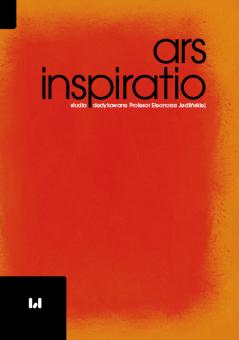O symbolice XIV-wiecznych scen rodzajowych, ukazanych w rzeźbie architektonicznej dwóch fryzów impostowych kolegiaty w Sandomierzu
Streszczenie
Gotycka kolegiata pw. Narodzenia Najświętszej Maryi Panny w Sandomierzu, ufundowana przez Kazimierza Wielkiego, zyskała ciekawy zespół rzeźb architektonicznych w obrębie zworników, wsporników i fryzów impostowych, z których większość stanowi przykłady plastyki wysokiej klasy. W bogatą dekorację floralną, zdobiącą strefę kapitelową świątyni, wpleciono wizerunki zwierząt i fantastycznych stworzeń. Na szczególną uwagę zasługują dekoracje rzeźbiarskie fryzów dwóch par filarów znajdujących się na linii dwóch wejść do świątyni – północnego i południowego. Przedstawiają one pościg psów za zającem i psa poganiającego jeża. Sceny te są wyjątkowe nie tylko ze względu na widoczne interakcje, które niosą za sobą treści symboliki średniowiecznej, ale też możliwość podjęcia próby zrozumienia programu ideowego rzeźby architektonicznej kolegiaty sandomierskiej. Kluczem do jej zrozumienia są teksty Ojców Kościoła, fizjologi i bestiariusze wraz z bogatą ikonografią średniowieczną. Gothic collegiate church of the Nativity of the Blessed Virgin Mary in Sandomierz, founded by king Casimir the Great, has an interesting set of architectural sculptures within the keystones, corbels and impost friezes. Most of them are examples of high-class art. Among the rich floral decorations in the capital zone of the temple, there are images of animals and fantastic creatures. Particularly noteworthy are the sculptural decorations on the friezes of two pairs of pillars, located on the line of the two entrances to the temple – the northern and southern one. They depict dogs chasing a hare and a dog chasing a hedgehog. These scenes are unique not only because of the visible interactions that carry the content of medieval symbolism, but also provide an opportunity to try to understand the ideological program of the architectural sculpture of the Sandomierz collegiate church. The key to understanding it are the texts of church fathers, physiologists and bestiaries along with rich medieval iconography.
Collections


